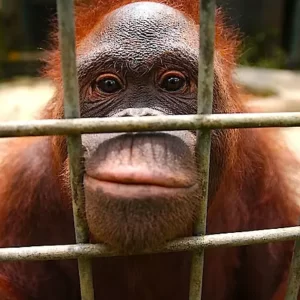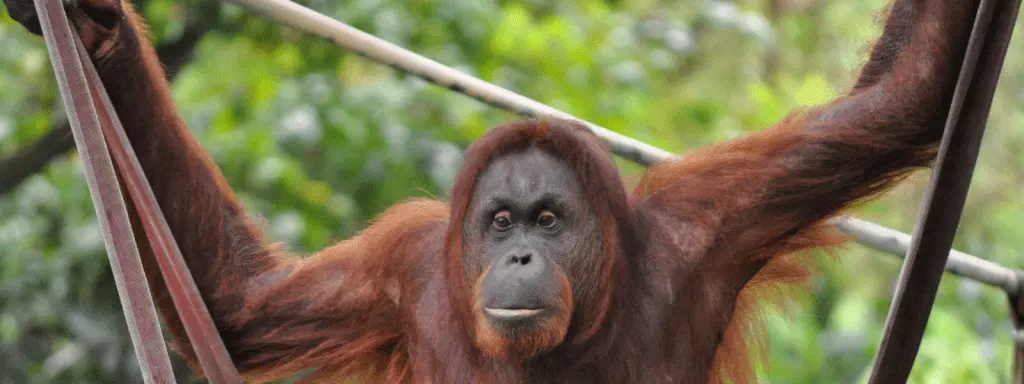Quick Summary Ethical Orangutan Tourism: The post emphasizes the importance of choosing ethical experiences to see critically endangered orangutans in…

Zoo vs. Rescue Centre vs. Sanctuary: Which really protects wildlife?
9.
Zoo vs. Rescue Centre vs. Sanctuary: Which really protects wildlife?
Zoo vs. Rescue Centre vs. Sanctuary: Understanding the Key Differences
When we think about places that house wild animals, terms like zoo, sanctuary, and rescue centre are often used interchangeably. However, understanding their core missions and operational philosophies is crucial. While all aim to care for animals, their primary purposes and the ethical considerations can be vastly different.
The Purpose of a Zoo
At its heart, a zoo is designed primarily for human entertainment and education. The visitor experience is often paramount, with exhibits created to showcase a wide variety of species. While modern zoos increasingly emphasise conservation and education, their fundamental model is built around public display and engagement. Animals in zoos are typically acquired through breeding programs, exchanges with other zoos, or occasionally from rescue situations, but their presence is primarily to facilitate human interaction and learning, often in an urban setting. Importantly, you should bear in mind that zoos can be publicly or privately owned on either a for-profit or non-profit basis.
The Role of a Wildlife Rescue Centre
 A wildlife rescue centre focuses squarely on animal welfare, particularly for animals in distress. Crucially, these facilities exist to provide immediate care and rehabilitation for wild animals that have been injured, orphaned, illegally trafficked, or displaced from their natural habitats. The ultimate goal of a rescue centre is typically to rehabilitate these animals with the intention of releasing them back into the wild. Consequently, their operations are geared towards medical treatment, specialised care, and preparing animals for a return to their natural environment. Visitor access, if any, is usually secondary and managed to minimise stress on the animals. Furthermore, rescue centres are almost always managed by a nonprofit organisation. In Asia, many rescue facilities are operated in collaboration with the country’s wildlife department; the government often owns the facilities or provides confiscated animals, but the management is done by a local specialist NGO team.
A wildlife rescue centre focuses squarely on animal welfare, particularly for animals in distress. Crucially, these facilities exist to provide immediate care and rehabilitation for wild animals that have been injured, orphaned, illegally trafficked, or displaced from their natural habitats. The ultimate goal of a rescue centre is typically to rehabilitate these animals with the intention of releasing them back into the wild. Consequently, their operations are geared towards medical treatment, specialised care, and preparing animals for a return to their natural environment. Visitor access, if any, is usually secondary and managed to minimise stress on the animals. Furthermore, rescue centres are almost always managed by a nonprofit organisation. In Asia, many rescue facilities are operated in collaboration with the country’s wildlife department; the government often owns the facilities or provides confiscated animals, but the management is done by a local specialist NGO team.
What Defines a Sanctuary?
A sanctuary shares the animal welfare focus of a rescue centre but often provides long-term, lifelong care. Animals in a sanctuary are typically those that cannot be released back into the wild due to permanent injuries, habituation to humans, or a lack of suitable wild habitat. Unlike zoos, true sanctuaries do not breed animals, nor do they buy or sell them. Effectively, their sole purpose is to provide the best possible quality of life for their residents, prioritising their physical and psychological well-being above all else. Visitor interaction, if permitted, is carefully controlled to ensure it doesn’t compromise the animals’ welfare. Generally, sanctuaries are nonprofits.
Our checklist for an ethical wildlife centre
It’s easy to admire wildlife rescue centres; helping injured or mistreated wild animals is almost universally seen as a noble cause. But with something so inherently good, why the need for careful evaluation?
The truth is, wildlife rescue and rehabilitation are complex processes requiring specialised knowledge and skills that vary greatly depending on the animal. Caring for a small bird is far different from rescuing an elephant or an orangutan. The entire journey—from rescue to rehabilitation and, ideally, release—is incredibly challenging.
That’s why we’ve developed the R.E.S.T. for Wildlife framework to help you assess rescue organisations. It focuses on key criteria:
- R for Rehabilitation and Release: Prioritising the goal of returning animals to the wild.
- E for Enclosures and Enrichment: Ensuring animals have appropriate environments, care and stimulation.
- S for Specialist and Scientific: Emphasising expert knowledge and evidence-based practices.
- T for Transparency and Trust: Highlighting open communication and ethical operations.
Understanding these criteria empowers you to support organisations that truly make a positive, effective impact on wildlife welfare.
R
Rehabilitation
Do they adopt recognised guidelines for Rehabilitation?
- Physical rehabilitation to allow natural movement such as flying, walking, swinging
- Behavioural Rehabilitation to allow natural activities needed to thrive in the wild
Reintroduction
Do they carry out Reintroductions?
- Releases that are planned and monitored to increase wild populations
- Impact assessments on endemic wildlife and the natural habitat to ensure the release will not cause negative impact
E
Enclosures
Are the Enclosures suitable for each animal species to allow natural behaviour?
- Clean and safe with suitable food and fresh water, choice of cool or warm shelter and resting/hiding places
- Special quarantine and veterinary facilities are needed for recovery. release and disease management
Enrichment
Do they provide Enrichment for each animal species suitable to allow natural behaviour?
- Species-appropriate stimulation to enhance the physical and mental well-being of the captive animals
S
Specialist Staff
Is the centre managed by qualified staff ?
- At least a dedicated veterinarian and trained keepers operating a health and husbandry programme to guarantee the welfare of the animals
Science-based
Do they adopt responsible, science-based methods?
- No invasive research, no commercial trade, only breeding for conservation purpose
- No direct contact for exploitation (petting, photos, rides)
T
Transparency
Is there Transparency in the licensing, management and funding?
- Nonprofits should provide insight into their operations and income to build public Trust
- It should be clear how many animals are acquired and from where, and where they are relocated
Tourist
Are public and Tourist visits educational and regulated?
- The public allowed in for education only with safe and, if any, restricted contact between visitors and animals
Overlapping Roles and Ethical Considerations
It’s important to understand that some facilities may combine elements of these definitions. For example, our Malaysian Wildlife programme carefully vets alll our project partners and only works with genuine rescue centres. However, many of our partners, such as our Java Wildlife rescue centre, may also serve as a sanctuary if they consistently take in animals that are non-releasable. Similarly, some organisations, depending on local legislation and the specific conservation challenges they address, might operate with hybrid models.
However, the ethical distinction remains vital. When supporting or visiting an animal facility, always research its primary mission. Does it prioritise genuine animal welfare and conservation, or is its main aim human entertainment? Understanding these differences helps ensure your support goes to organisations truly dedicated to the well-being of the animals they care for. Of course, feel free to explore all our ethical wildlife projects for volunteering and internships



